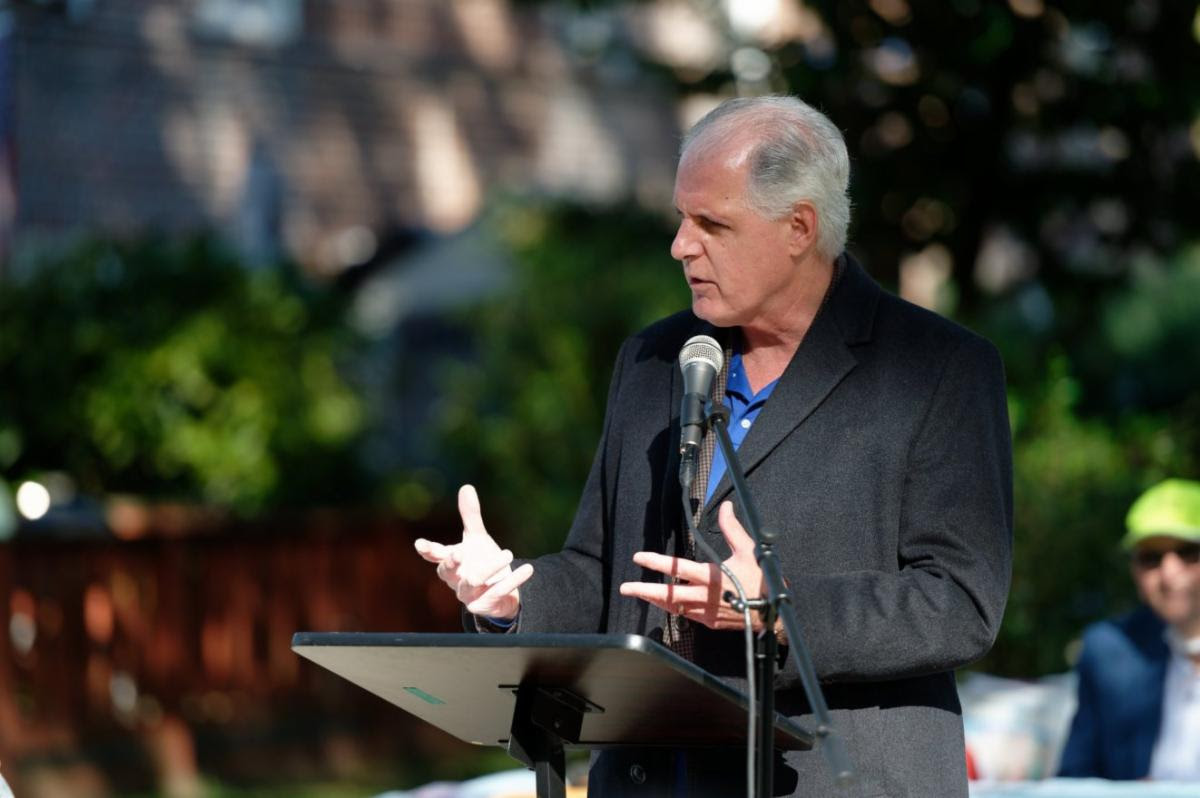
A squat robot brings one storage pod after another before a platform, where Corey Schultz, 28, reaches inside one of the pod’s roughly 50 pockets.
Schultz, a picker at Amazon’s Staten Island fulfillment center, puts ordered items in one of six yellow totes on a ledge near his hip.
Once the tote is full of merchandise, Schultz nudges it onto a conveyor belt, which brings it to a packer, who seals items into boxes. The packages then whiz across a scale, under a machine that stamps postal information and onto docks, where workers load them onto trucks.
"I like being physical and constantly moving," said Schultz, a Staten Island resident, who flashed a card with the number 4,500 on it, indicating that he recently hit a personal best and moved that many items during a 10-hour shift. "I like the competition part of it, where they go, like, ‘Oh, If you’ve picked this fast or you hit this mark, you get something or you get recognition for it.’"

The four-story warehouse named JFK8 (after John F. Kennedy International Airport) opened in September, marking Amazon’s first foray in fulfilling orders from a center located within the city or state. The 855,000-square-foot site has prompted controversy, particularly from the Retail, Warehouse and Department Store Union, which has helped a former employee file a grievance with the National Labor Relations Board. The union has huddled with Amazon workers complaining about the lack of a shuttle to the warehouse, the length and frequency of breaks, and the pace expected of employees.
Amazon has denied targeting the worker who filed the grievance because he was organizing colleagues and presented various positions on unionization. When pitching plans for a now-nixed campus in Queens, an Amazon executive told City Council members the company could not commit to neutrality should workers want to unionize. In prepared statements, Amazon has said it respects employees rights to choose a union, but believes "direct connection" between the company and workers provides a safe, positive environment complete with many of unions’ traditional requests, including competitive pay, benefits and advancement opportunities.
From inside the Bloomfield warehouse last week, Rachael Lighty, an Amazon spokeswoman, estimated that 75 percent of the warehouse’s more than 2,000 full-time employees hailed from Staten Island.
She pointed out classrooms, where employees who have reached a year with Amazon are eligible to enroll in courses on health care, driving, and information and computer technology, for which the company pays most of the cost.
"I like it here," said Jing Zhang, 31, a Long Island resident who intends to enroll in IT training. "That plus great benefits, easy environment, easy job."

As a stower, Zhang helps stash inbound goods, which others have pulled out of the boxes they are delivered in and piled into totes at his station.
Once Zhang pulls products out of totes, scans them and packs them into pods, they are available to those shopping on Amazon.com.
When he has filled a pod, a robot capable of lifting up to 1,000 pounds shuttles it away and stores it among the thousands of other refrigerator-sized storage receptacles.
Hundreds of 350-pound robots resemble large, orange Roombas and navigate around one another when moving pods.
If a robot falls out of sync with the tracking system or an obstruction blocks it from the QR codes it relies on, workers use a vest to inform the system they are entering the robots’ domain and then remedy the situation.

Lighty said the speed at which workers labor depends on demand. She described Shultz and others referring to "their numbers" as describing personal goals, not quotas.
"They have targets as a team," Lighty said. "Buildings of this size can ship up to several hundred thousand packages per day … Every single person needs to kind of be doing their job correctly in order to hit those numbers."
With 13 miles of conveyor belt, the fulfillment center handles items less than 18 inches in diameter and under 50 pounds. Staffing levels range shift to shift, from several hundred to 1,000, according to Lighty. She said employees at JFK8 typically work four 10-hour days and then rest for three days.
Lighty declined to specify how many trucks pull into the fulfillment center a day, saying only that it varied by demand.
Most stamped packages leave JFK8 for other Amazon facilities, where they are sorted by ZIP code and assigned delivery routes. But those requiring more prompt delivery may be directly dispatched to a customer, Lighty said.
































